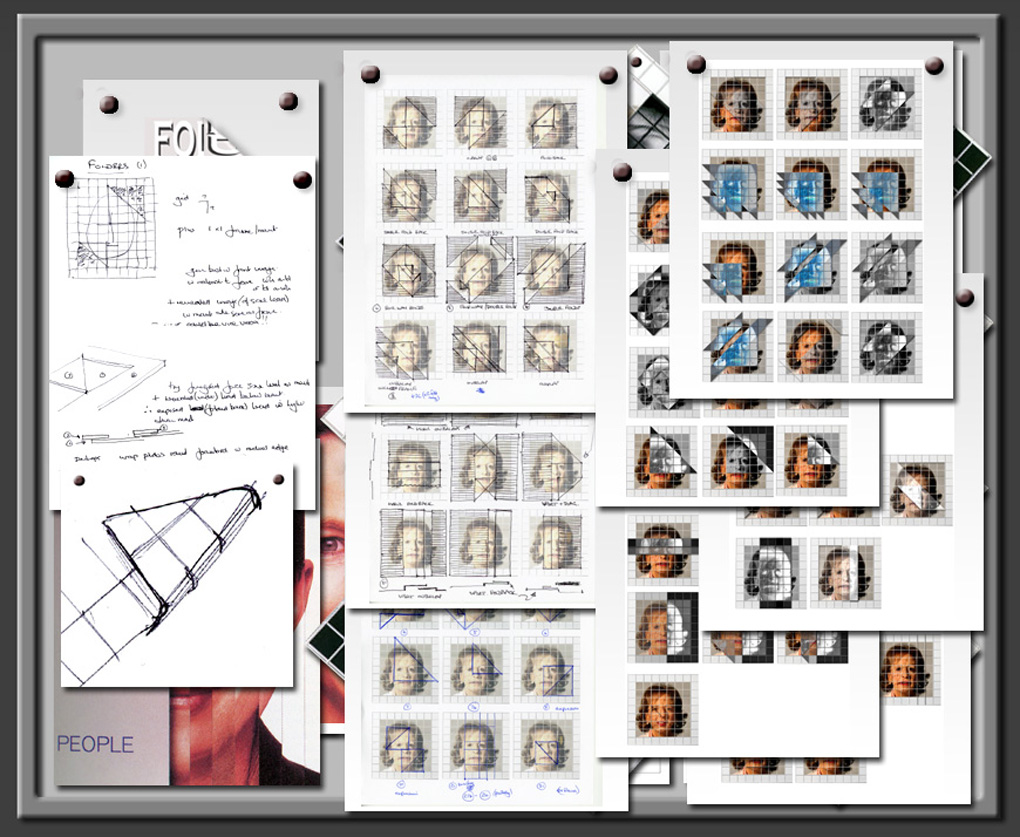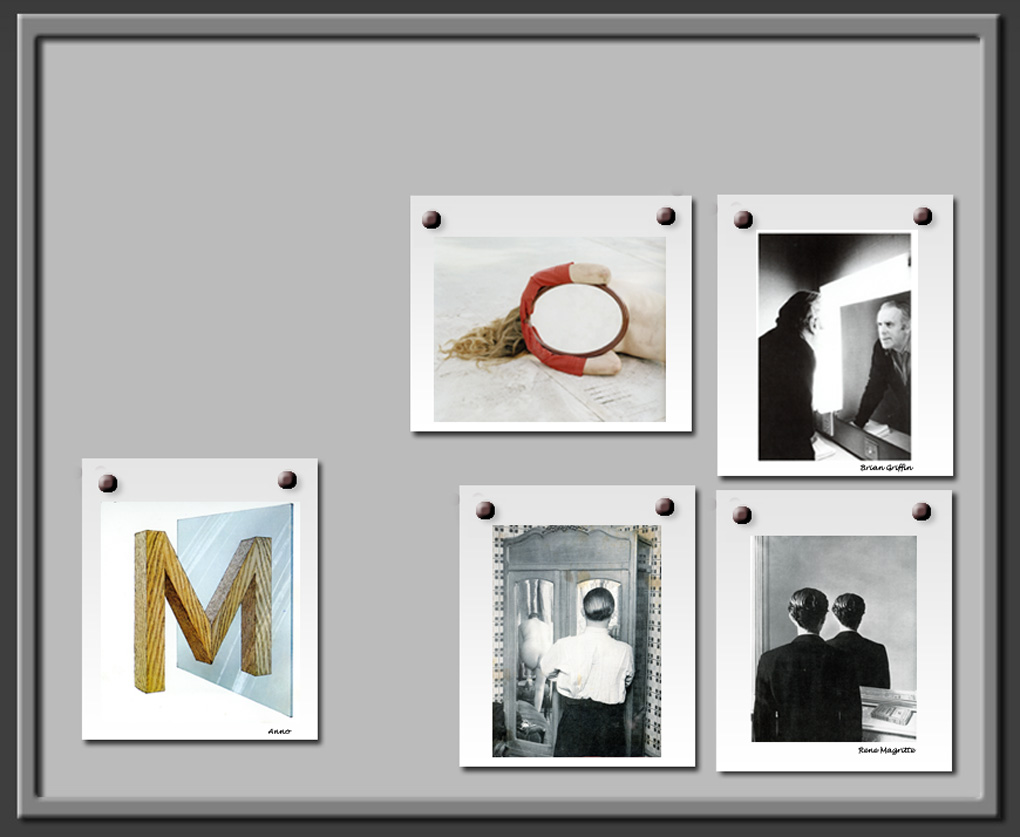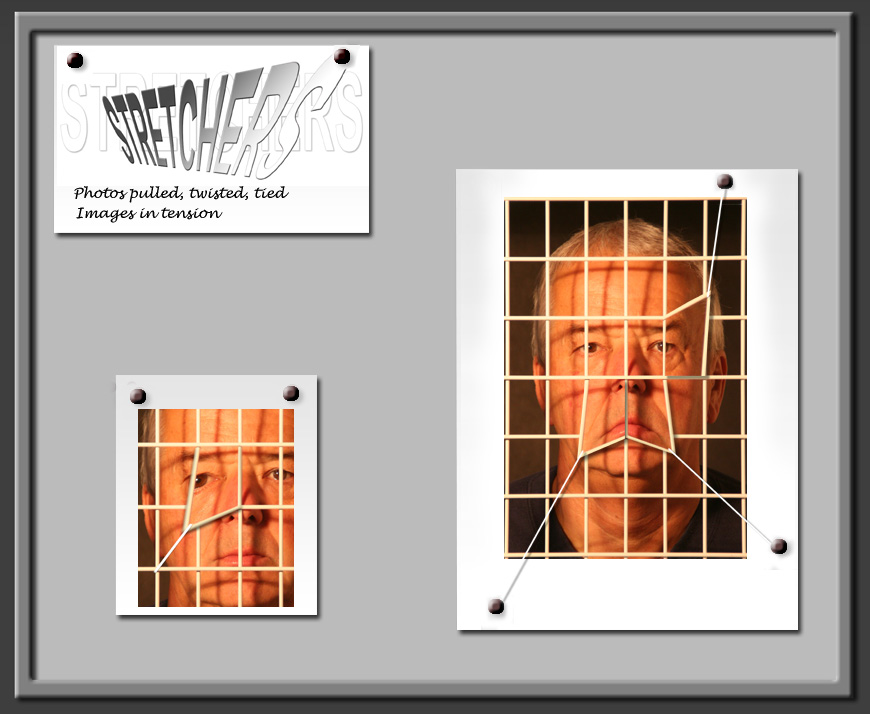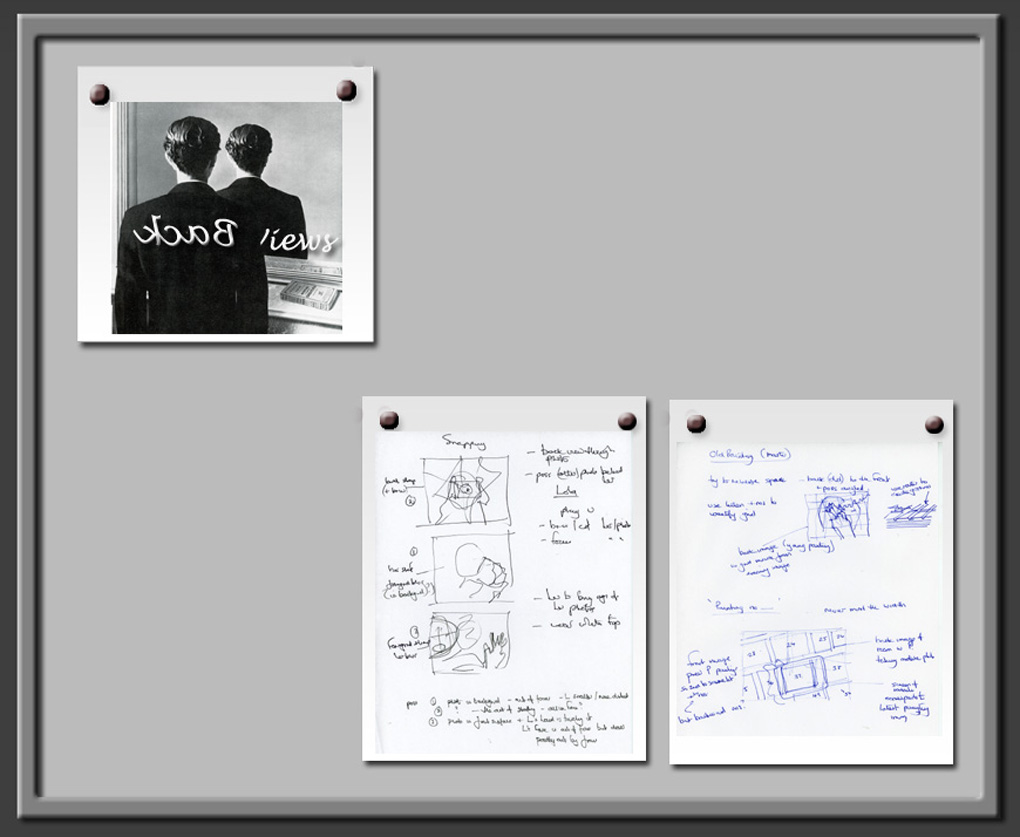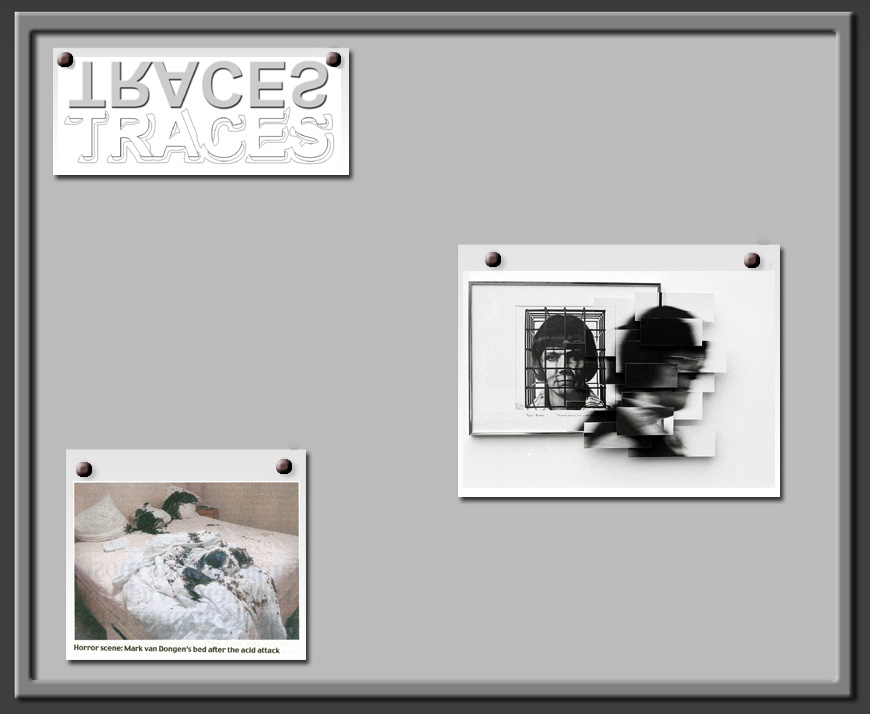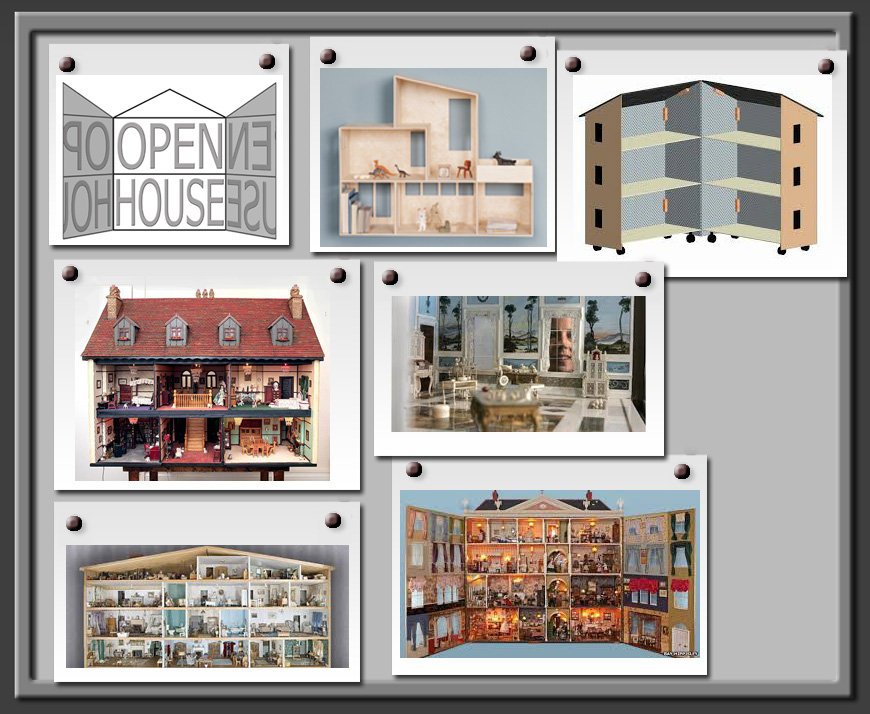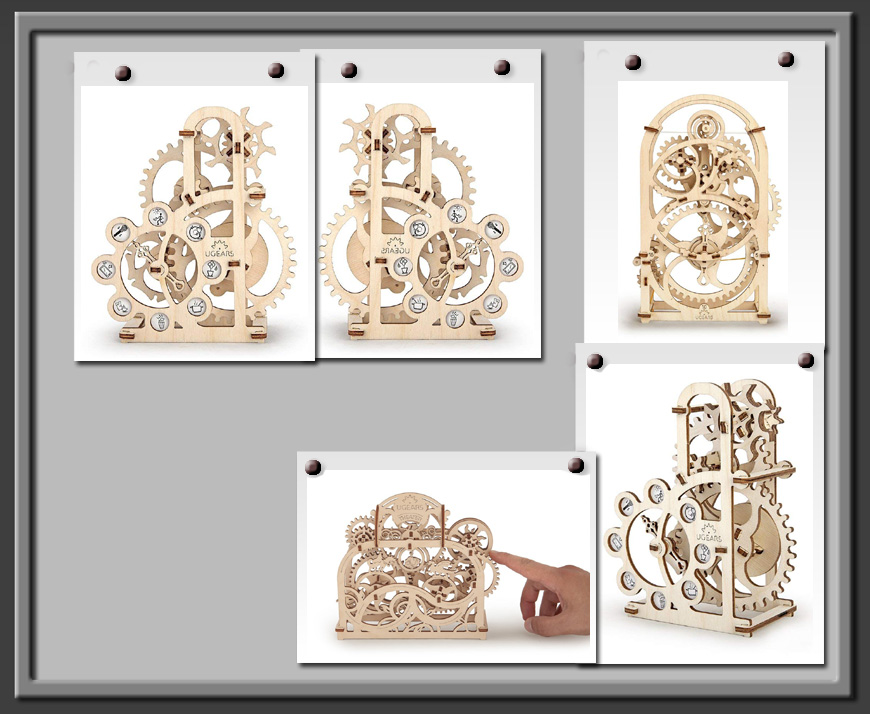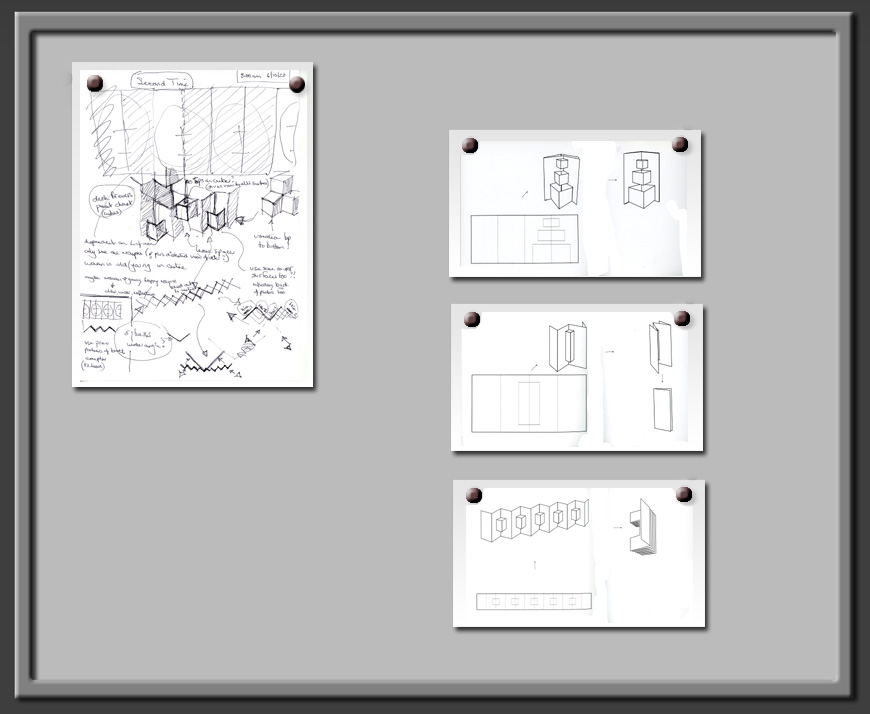Espacio Ronda
2025
This is an exhibition in Espacio Ronda, Valencia
Se trata de una exposición en Espacio Ronda, Valencia
Peter Banks is an artist and photographer. He explores the potential of photography to make us question what we see and how we see it - the ambiguity that can be used to alter or heighten our interpretation of reality. He aims to create the shock, the surprise, the new way of seeing something that opens up alternative possibilities. He is interested in the relationship between what a photograph is and what it represents. What can be done to a photograph as well as what can be done in it.
He uses life-size photographic images to both cover and reveal their subjects – masking or boxing something in by its own image. He enjoys the ambiguity of photographic space and his work creates tensions between real form and space and a two-dimensional illusion of them.
He explores the idea of photos as the trace that people leave behind them and how photos can punch a hole through a current situation to reveal something of its past. He is intrigued by analysing the ordinary – isolating, ordering, framing, extracting, reflecting – as a way of understanding and affecting the interpretation of its meaning – like a forensic approach to a crime scene.
He believes that how and where you see things affects their meaning and he is keen to explore these possibilities and to access a wider public by developing and showing his work not just in conventional galleries, but also in a range of different public settings.
Peter Banks has exhibited widely in the UK and elsewhere at venues including:
AIR Gallery, Serpentine Gallery, Riverside Studios, Whitechapel Gallery in London; Whitworth Gallery, Peterloo Gallery in Manchester; Impressions Gallery in York; Midland Group in Nottingham; National Museum of Photography, Film And TV in Bradford, ARE in Belfast.
His work has also been displayed at a wide range of public venues, including shopping centres, railway stations, town centres, poster hoardings and derelict buildings.
He has received financial support from Arts Council, major galleries and commercial sponsors, as well as working to private commissions. His work has been featured in national press, specialist art and design journals and on line publications.
Peter Banks is an artist and photographer. He explores the potential of photography to make us question what we see and how we see it - the ambiguity that can be used to alter or heighten our interpretation of reality.
He aims to create the shock, the surprise, the new way of seeing something that opens up alternative possibilities. He is interested in the relationship between what a photograph is and what it represents. What can be done to a photograph as well as what can be done in it.
He uses life-size photographic images to both cover and reveal their subjects – masking or boxing something in by its own image. He enjoys the ambiguity of photographic space and his work creates tensions between real form and space and a two-dimensional illusion of them.
He explores the idea of photos as the trace that people leave behind them and how photos can punch a hole through a current situation to reveal something of its past. He is intrigued by analysing the ordinary – isolating, ordering, framing, extracting, reflecting – as a way of understanding and affecting the interpretation of its meaning – like a forensic approach to a crime scene.
He believes that how and where you see things affects their meaning and he is keen to explore these possibilities and to access a wider public by developing and showing his work not just in conventional galleries, but also in a range of different public settings.
Peter Banks has exhibited widely in the UK and elsewhere at venues including:
AIR Gallery, Serpentine Gallery, Riverside Studios, Whitechapel Gallery in London; Whitworth Gallery, Peterloo Gallery in Manchester; Impressions Gallery in York; Midland Group in Nottingham; National Museum of Photography, Film And TV in Bradford, ARE in Belfast.
His work has also been displayed at a wide range of public venues, including shopping centres, railway stations, town centres, poster hoardings and derelict buildings.
He has received financial support from Arts Council, major galleries and commercial sponsors, as well as working to private commissions. His work has been featured in national press, specialist art and design journals and on line publications.
The website displays current work, along with the ideas and processes that underpin it, as well as acting as a comprehensive archive of past work and its development over time. The home page shows work currently in progress (below) and also features a display of the most recently completed piece (top of page). Previous work is accessed through the main menu. It is arranged chronologically with earlier pieces at the top of the menus and more recent at the bottom.
Some related pieces are grouped together. Most have supporting text and imagery. This includes related sequences of supporting images, videos and a developing record of how the piece evolved during production.
The purpose of the site is not to sell the work, at least not in a literal sense. In fact the majority of the work in Gallery Installations and Public Works no longer exists, other than as a photographic record. It was conceived and realised for a particular location at a particular time and was taken apart and destroyed at the end of that time.
Proposals for new installations, venues and commissions are always welcomed, as are your thoughts on the work displayed on the site.

The website displays current work, along with the ideas and processes that underpin it, as well as acting as a comprehensive archive of past work and its development over time.
The home page shows work currently in progress (below) and also features a display of the most recently completed piece (top of page). Previous work is accessed through the main menu. It is arranged chronologically with earlier pieces at the top of the menus and more recent at the bottom.
Some related pieces are grouped together. Most have supporting text and imagery. This includes related sequences of supporting images, videos and a developing record of how the piece evolved during production.
The purpose of the site is not to sell the work, at least not in a literal sense. In fact the majority of the work in Gallery Installations and Public Works no longer exists, other than as a photographic record. It was conceived and realised for a particular location at a particular time and was taken apart and destroyed at the end of that time.
Proposals for new installations, venues and commissions are always welcomed, as are your thoughts on the work displayed on the site.
The work is produced from photographic imagery built into three-dimensional structures made from card, timber, wire, acrylic, glass and mirror.
They range from small-scale objects that fit in the hand to large structures and installations in galleries and public spaces.
Whether they are fully three-dimensional or wall-mounted relief structures, they change appearance and meaning when seen from different viewpoints.
Photographs and sequences are one-off images and narrative sequences.
Photosculptures are structures that incorporate or are made up of photographic imagery to create three-dimensional photographs.
Photopuzzles are three-dimensional games – sculptures to play with.
Gallery installations are works commissioned by contemporary art galleries and usually developed in the gallery space during the exhibition.
Public works are pieces carried out in a range of public venues, including poster hoardings, shopping centres and outdoor spaces. Many were commissioned by the venue or by third party funders.
Work in Progress…..
Work in progress is a display of new pieces at different stages of development. The content includes first thoughts and ideas, source material and influences, trials, experiments and mock-ups.
Each work is developed progressively and when it reaches a state of completion it is featured at the top of the home page and then is transferred to the main menu.
For more information click the Process button below

Borrowed Thoughts
In a Japanese garden the term “Shakkei” or “Borrowed Landscape” refers to the view beyond the garden. It is borrowed because it is not owned or controlled by the gardener, but it expands and gives context to the garden.
These thoughts do likewise.
Borrowed Thoughts
In a Japanese garden the term “Shakkei” or “Borrowed Landscape” refers to the view beyond the garden. It is borrowed because it is not owned or controlled by the gardener, but it expands and gives context to the garden. These thoughts do likewise.















































